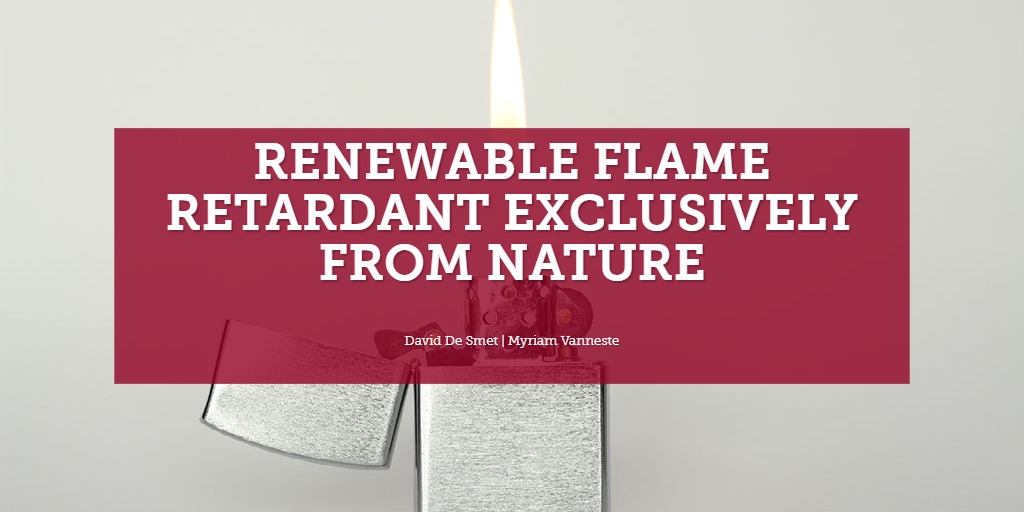Context
The REACH regulation for chemical substances has a large impact on coating and finishing industry. Some flame retardants (FR) have been banned by EU regulations (REACH) for their environmental-unfriendliness. Therefore, there is a need to look into new alternative environmentally-friendly FR additives.
Next to the regulation, industry is challenged by the increasing “bio, eco, natural and environmental friendly” consciousness of the consumer resulting in various textile and leather labels. Furthermore, environmental guidelines and regulations prescribe a reduction of CO2-emission. An important strategy to achieve this is the replacement of petrochemical resources by CO2-neutral alternative products such as biopolymers.
Materials, totally based on CO2-neutral renewable resources (biobased materials), constitute a significant enhancement in respect to ecological and procedural aspects.
The development of non-toxic biobased FR is still a challenge and demands the elaboration of novel formulations and compounds for coating and finishing.
Aims
The aim is to develop non-toxic, durable and biobased FR coatings and finishes. It is known that phosphorylated bio-based polymers (e.g. modified lignin) have a FR effect through barrier layer formation. It is also known that the combination of phosphorus and nitrogen-containing compounds often acts synergistically and is therefore already used in conventional FR systems. This principle should now be transferred to proteins.
Proteins are suitable for developing biobased FR thanks to the high quantity of nitrogen. Chemical modification of proteins with phosphorous containing groups will increase the FR efficiency. For this, suitable non-food proteins are selected and modified by phosphorylation. The modified proteins will be characterized regarding their chemical composition, esp. nitrogen and phosphorus content.
The implementation of the newly developed biobased FR in finishing and coating of leather and textiles will be evaluated. According to their performance, different end applications are envisaged (leathers, outdoor textiles, indoor and technical textiles).
Consortium
Centexbel (Belgium), FILK e.V., (global coordinator, Germany) will be responsible for the management and dissemination of the results. Centexbel and FILK will perform the research.
Target group
- coating / finishing companies (textile and leather)
- producers of FR/additives
- producers of ready-to-use FR formulations





